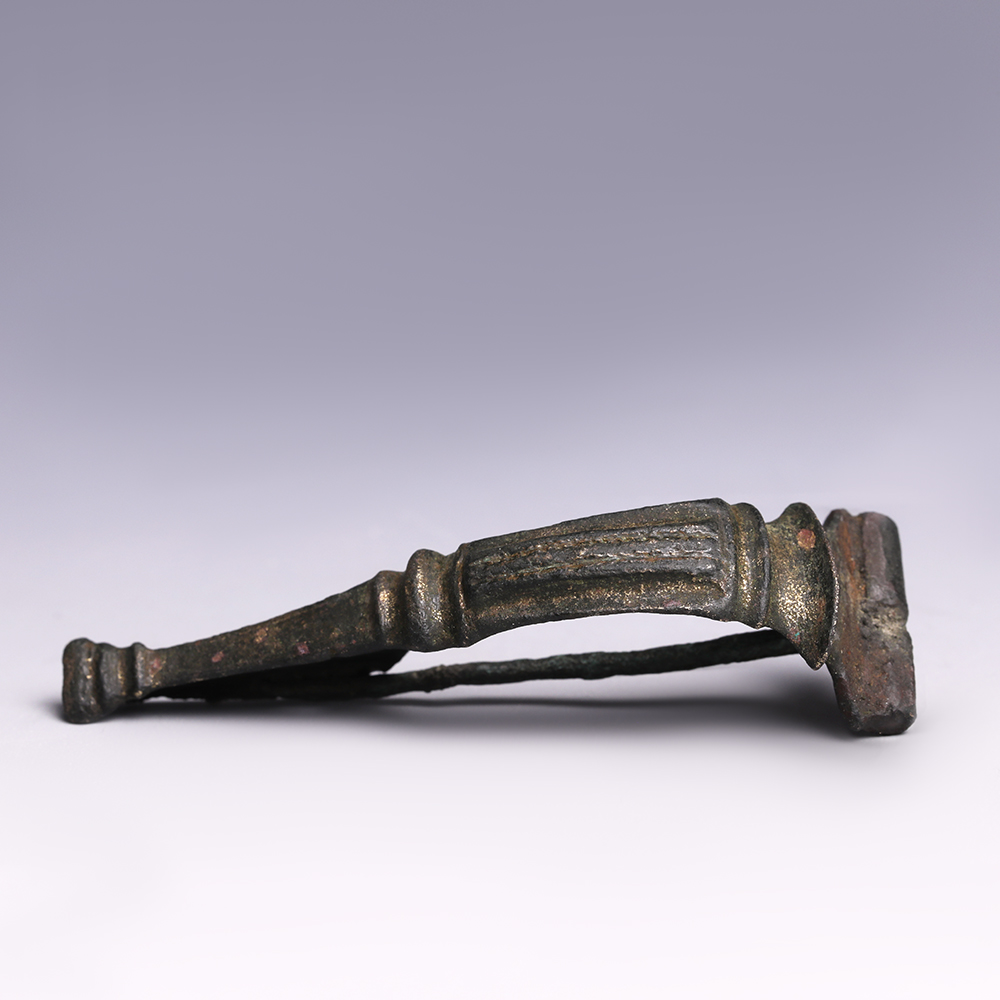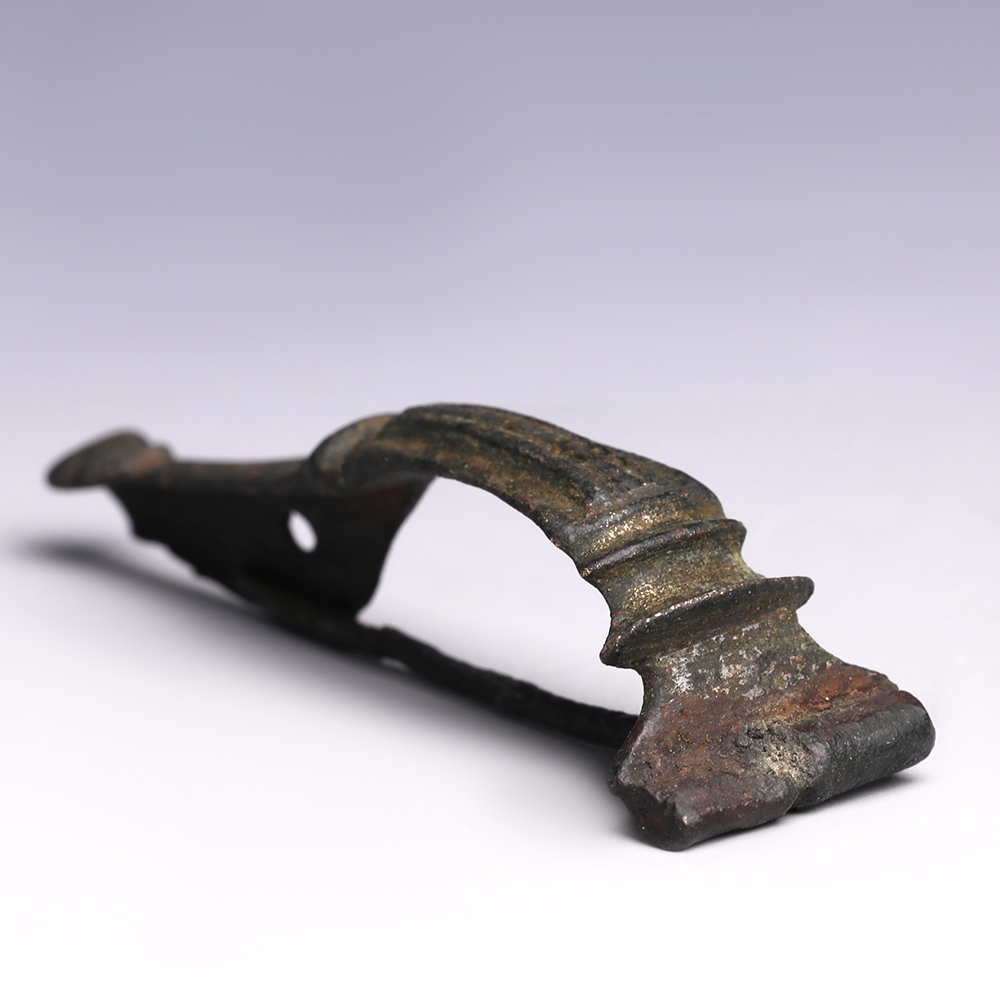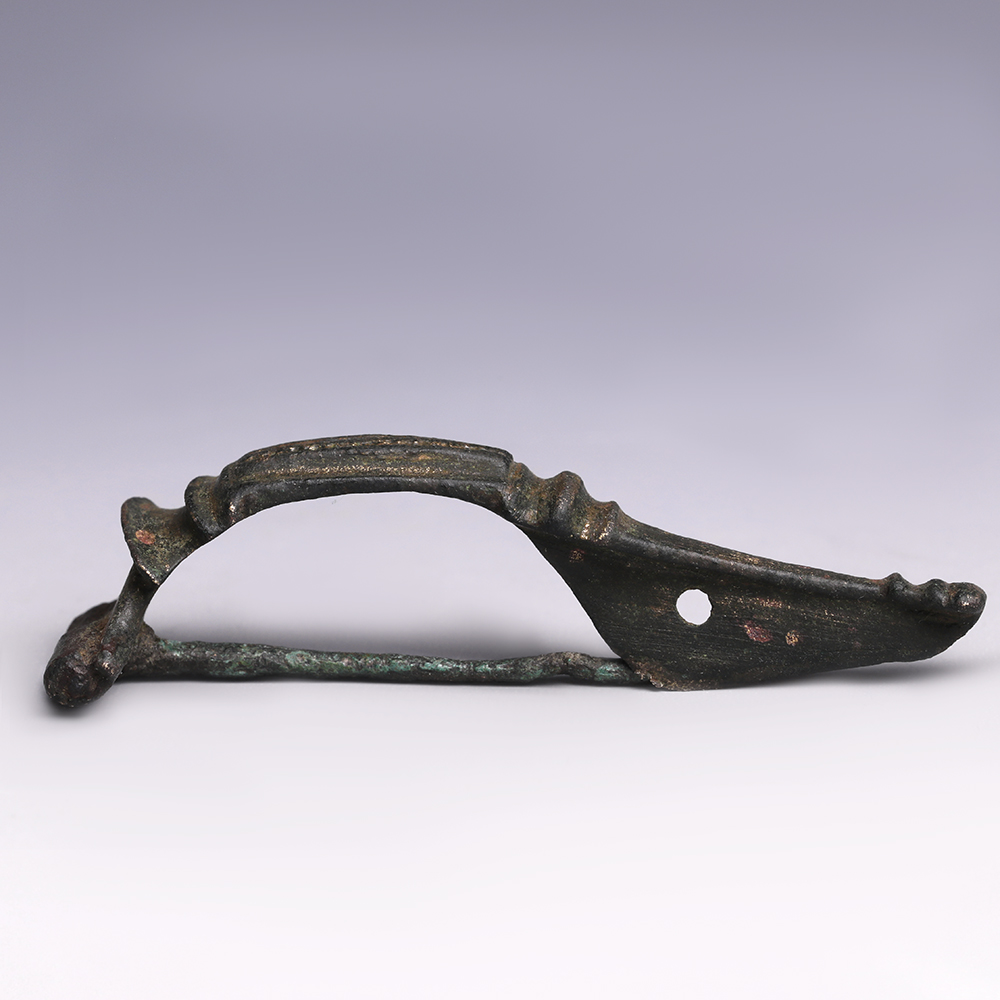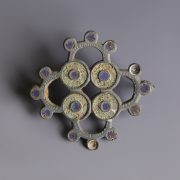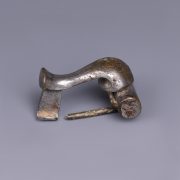Fibulae or brooches were originally purposed as garment fasteners in the Roman Empire. Roman soldiers especially, wore fibulae as decorative piece to keep their cloaks together. These brooches replaced straight pins that were used to fasten clothing in the Neolithic period and the Bronze Age. Fibulae are the most common artefact-type in burials and settlements throughout much of the continental Europe. Their modern day equivalent are the trustworthy safety pin. There were a multitude of fibula designs in Roman culture, Hod Hill type brooches display a great variety in shapes and decorative patterns. Probably originated in the Moselle region, they were among the most popular type of fibulae across the Roman provinces.
Romano-British Bronze Hod Hill Type Brooch
$118.34
A fine Romano-British bronze fibula of the Hod Hill type. It features a thin and wide long bow, gently arched into a D-shaped profile. To the top, the bow features central rib with cavetto moulding and narrows at its foot, also known as the leg. This splays out at the end into a triangular foot, topped by two horizontal ridges. To the front of the bow, the piece widens into a rectangular, flat plate, decorated by a pronounce ridge with a convex edge. The end of the plate curls upwards around the axis pin. The pin itself is circular and narrows to a point, which rests within a triangular, perforated catch plate.
This piece has been found in the East Midlands in the 1980s.
Provenance: From a Surrey gentleman's collection (D.G.), purchased on the London Art market from ADA member, 1990s - onwards.
Condition: Fine condition. The pin is now blocked, patination remains on the surface.
SOLD
| Weight | 9.9 g |
|---|---|
| Dimensions | L 6 x W 2 x H 1.9 cm |
| Culture | |
| Region | |
| Metal |
